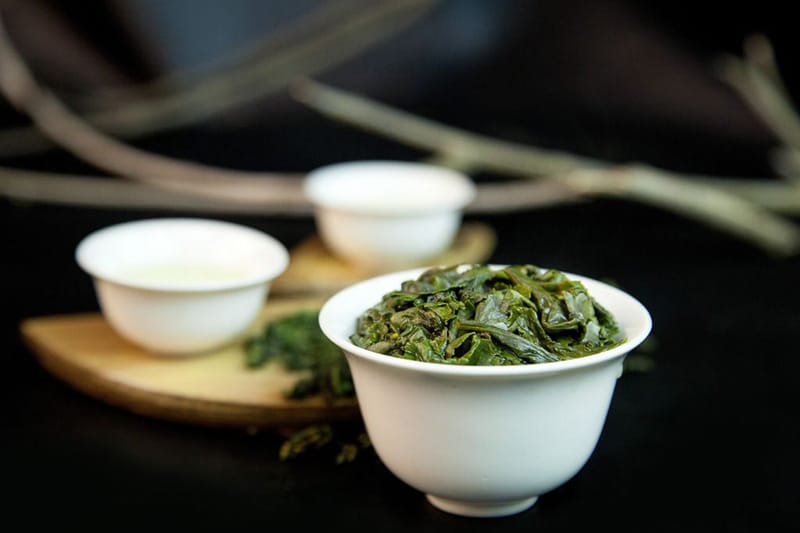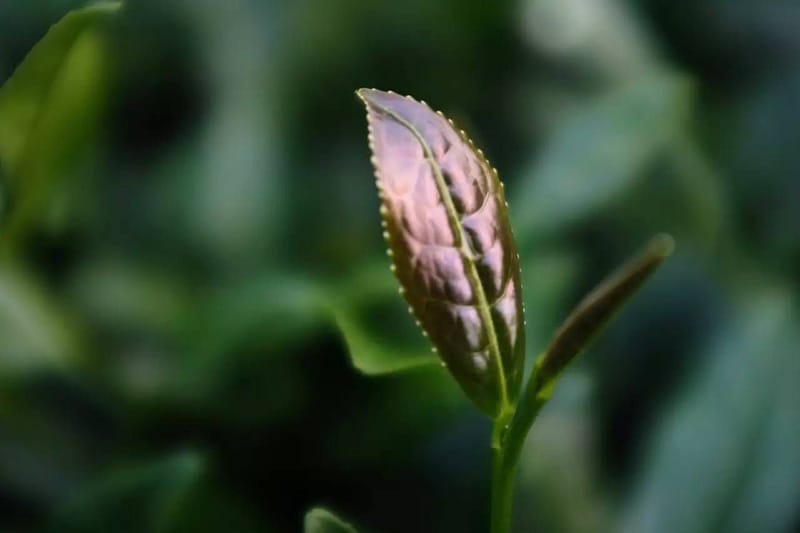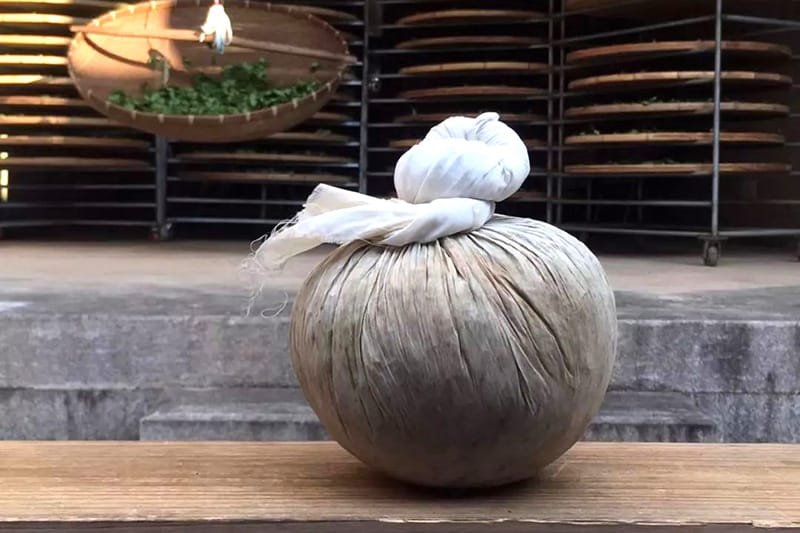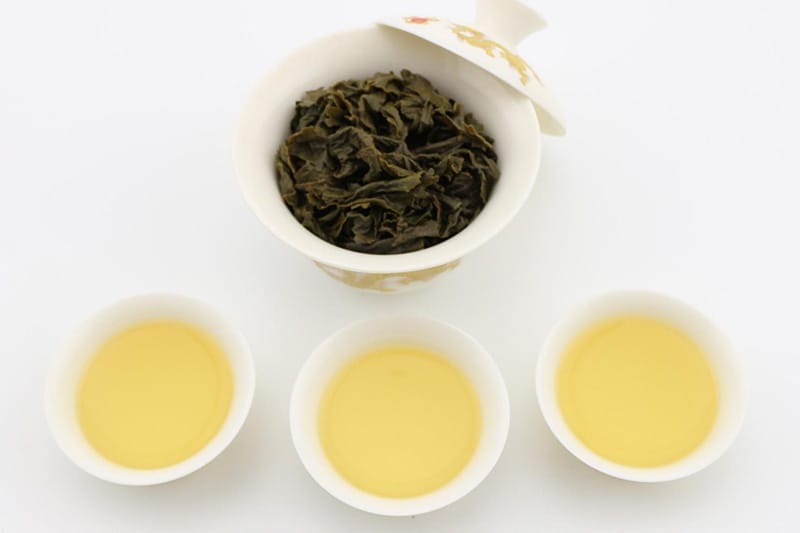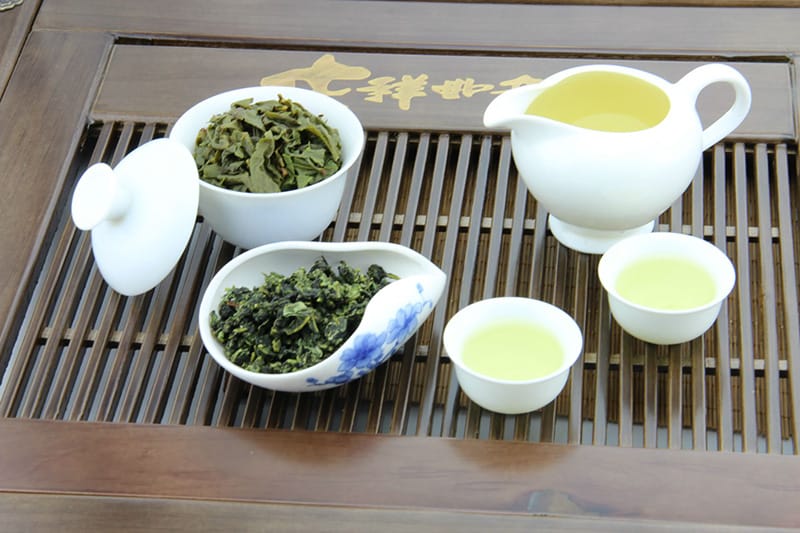Last Updated on 03/07/2021 by Desmond
Do you remember what type of tea your first try is? I guess most people, just like me, is Tieguanyin tea. Its rich floral aroma is so charming, and the cool mouthfeel is very suitable for those who first try drinking tea. Plus, Tieguanyin got a broad market, you can easily buy it on the street or store; no matter high or low-quality ones, it will never make you disappointed.
CONTENT
What Is Tieguanyin Tea
Typically, this excellent tea is also called Iron Goddess/ Buddha or Iron Bodhisattva of Mercy. Don’t be fooled by its green looks; Tieguanyin actually belongs to Oolong tea but not green tea, which originated in Xiping country, Anxi City, Fujian, China. According to historical records, it was invented in Qing Dynasty, about 1725-1735. Be together with Wuyi Rock tea, they are regarded as the Minnan Oolong tea representative.
Legend of The Name
Just like most legends that talk about a man who gets blessed by a devout faith, Tieguanyin tea is also regarded as a gift from god. Guanyin means the Goddess of Mercy in Chinese, and this story happened in Qing Dynasty. A teenager named Wei and his whole family were staunch Buddhists. There was s run-down temple beside his house; Wei served teas and incense to the Goddess statue in there every day and never slacked off. Even though he wants to refix the run-down temple very much, he was poor; these tributes were all he can do.
Guanyin was moved. One night, Guanyin came into Wei’s dream and guided him to the front of a tea tree. Guanyin said, this is a Sin tea tree, you must cultivate and promote it with your heart, it can not only make you fortune, but the great health benefits also can let people far away from diseases.
Wei woke up the next morning, and he really found that tea tree in the mountain. He produces tea with the leaves from that tree, the tea sent lots of orchids aroma; it was very different from other tea types. This tea was popular and made Wei rich. People want to name this tea Wei, the teenager’s name. But Wei was a devout believer, and he was modesty. He decided to call this tea Guanyin Tea. Due to it was frying by an iron pot during processing, the leaves’ look and weight also like iron, finally, the tea named Tie(iron) Guanyin.
Processing
Tieguanyin is not only mean a tea but also refers to a type of Camellia Sinensis. The most famous is the Red-bud Tieguanyin type, which got a red new-born bud, and belongs to the middle-leaf bush. Of course, after years of R&P, tea masters develop lots of varieties of Tieguanyin tea plants.
As an Oolong tea, the processing of Tieguanyin is very complicated; it is up to a dozen steps. And the impressive orchid aroma was made from the processing, without any Artificial Fragrances.
Picking
Unlike green tea and white tea, Tieguanyin picking does not take the tenderest as standard, typically pick the bud and the third to the fourth leaf. It got a unique picking method called “open-face picking,” which is complex but can harvest the best leaves without harming the trees. Thanks to this method, Tieguanyin can be harvested all year round and got a high yield.
Placing
After picking, the fresh leaves will be placed on the square or in a special house. It lets the moisture on the surface get evaporation, low down the high temperature from fermentation, and keeps the leaves fresh.
Sunning
Leaves will be sent to sunning after the short placing. Direct sunlight can further help reduce the water content, enhance enzyme activity, and make the internal material transform. It also will destroy chlorophyll moderately and remove some herbaceous smell.
Placing Again
Tea masters placing the leaves again for cooling down. After 30-60 mins, leaves will be sent to the most essential step – shaking.
Shaking
Shaking is the most essential step in Oolong tea processing. Tea masters put the leaves into a big bamboo sieve, keep shaking and make the leaves crash each other. Thus, the rim of the leaves broke, the juice flows out and covers the surface. The polyphenols and other substances in juice contact with the air and get oxidate to form Oolong tea’s feature – Green leaf with Red edge. The unique aroma and flavor also come from here.
Frying
Then tea masters will put the leaves into a big iron pot for frying. Use the heat to inhibit the enzyme activity, stopping the leaves from fermenting, and remove the herbaceous smell. Due to the leaves are not fermented completely, so Oolong tea is also called partially-fermented tea.
Nowadays, most tea factories will fry tea by a machine.
Rolling
Rolling is for shaping the leaves; crimp the leaves into strips by a machine.
First Drying
Use high temperature to dry the leaves by a machine, further inhibiting the enzyme’s remnant activity, evaporating most of the water, and making the juice solidify on the surface.
Package Rolling
Put the dry leaves in a cloth bag, rolling by a machine, let the leaves become tighter, and crimp into a small ball shape.
Unblocking
The leaves will secretion some juice during the package rolling and make them stick together into a block. Tea masters need to unblock them again for the following process.
Drying Again
This is the last step in Tieguanyin tea primary processing. Dry the leaves to a standard dryness for better storage. Simultaneously, the leaves’ internal substances will be further transformed, such as the tea polyphenols oxidation, the caramelization of the sugar, which creates the unique flavor and fragrance.
Placing Again
After drying, leaves need to be placed again for a while to let the temperature cool down naturally and quickly to prevent the flavor from losing.
Sorting
Sorting belongs to the Tieguanyin further processing. Tea masters will sort the leaves carefully, remove the broken and bad ones and most tea stems. What is worth knowing, just like Shoumei tea, most Tieguanyin teas are with stems; It doesn’t mean it has a low-quality. Some tea stems that filter out will be sold separately; they are the cheap-drinks that serve customers in many Chinese food stalls.
Tieguanyin Varieties
Even though Tieguanyin belongs to Oolong tea and a relatively short history, tea masters keep study and improve it because of the excellent quality. They developed many Tieguanyin varieties.
Tieguanyin tea is typically classified according to the origin region and the flavor type.
By origin
Anxi Tieguanyin
Anxi is located in the southeastern Dai Yun mountains, with the northwest’s high terrain, southeast low, round by mountains. There are more than 3000 mountains over 1000 altitude, protect the interior from sea breeze attack suffering. The climate of Anxi belongs to the south subtropical Marine monsoon climate. It is warm and moist, the annual average temperature is between 16 and 21℃; the sunshine duration is long, more than 260 days over 10℃. Not hot in summer and not cold in winter.
It is widely believed, the tea produced at a higher mountain got better quality. Although there are many high mountains, Tieguanyin tea is less planted at cultivations over 1000 altitude. But due to the comfortable climate, tea trees are growing strong. Especially in the low-temperature period, the buds still grow slowly; it helps synthesize sugar, amino acid, and aromatic substances.
Muzha Tieguanyin
Taiwan Oolong tea is closely related to Fujian Oolong tea. Everybody knows that the Fujian immigrants brought the tea trees and processing methods of Oolong tea to Taiwan. In 1919, the Zhang brothers of Taiwan Muzha Tea Company brought 1000 Tieguanyin tea trees from Anxi and cultivated them in Muzha; it started the planting history of Tieguanyin in Taiwan.
Even though the environment of Anxi and Muzha are similar, the Tieguanyin they produced are very different in flavor. Muzha Tieguanyin got a longer rolling time. And during rolling, leaves will be baked by a charcoal fire, making the leaves a strong roasting flavor. And due to the final product looks like a ball, so it is also called Ball Baozhong Tea.
By flavor
The Tieguanyin tea sold on the market is primarily classified into four by flavor; you can easily choose one suitable to your taste.
Qing-flavor Tieguanyin
Qing-flavor Tieguanyin is popular in recent years. It got a light fermentation, fresh leaves, and clear infusion are its features. We may ever saw “Tuosuan,” “Waisuan,” “Qingsuan” are all its subtypes. No matter before or after brew, its leaves are always green, like just pick, also the infusion. The aroma is strong and fresh, a light taste with a litter herbaceous. It is very comfortable for the one who first tries on Tieguanyin, especially a green tea lover. Worth knowing, Qing-flavor Tieguanyin needs cold storage.
Strong-flavor Tieguanyin
Strong-flavor Tieguanyin tea is produced in the most traditional way. The leaves are a little dark-yellow, infusion shows golden. Due to the deep fermentation, strong-flavor Tieguanyin tastes more mellow. Even though it is not the most beautiful-look one, it got the most authentic flavor, and it’s the most senior tea lovers’ favorite.
Roasted-flavor Tieguanyin
Roasted flavor is the main feature of Taiwan Muzha Tieguanyin. Based on the traditional Tieguanyin processing method, charcoal roasts for 5-12 hours to get a roasted flavor, similar to the Lapsang Souchong tea. The roasted-flavor Tieguanying got the most strong mouthfeel, with a pungent and soft fragrance. After the infusion slows down your throat, it will leave a unique sweetest, called “back-turn sweetness.”
Some tea lovers will take long-term storage for Strong-flavor Tieguanyin. Every once in a period, they put it out and bake it to remove the moisten. After several times baking, the leaves also turn into a roasted flavor.
Aged-flavor Tieguanyin
Aged-flavor Tieguanyin typically refers to the one which has been store for over 5 years. The aging theory is like white tea – most come from the internal substances transforming. And, every once in a period, the leaves must be roasted to remove the moisten. So the Aged-flavor Tieguanyin tastes more robust and mellow.
Aged-flavor Tieguanyin primary comes in 3 ways:
- Produced and aging by the tea factories;
- Aging by tea lovers themselves;
- The backlog inventory in tea factories;
Except for the second, the other twos are not welcome, especially the backlog inventory teas; their quality is low. If you want to feel the charm of Aged-flavor Tieguanyin, the best way is to aging it by yourself.
Tieguanyin Benefits
Except for the excellent flavor, as a health beverage, Tieguanyin tea also can bring many benefits to your health. Most of them come from the tea polyphenol:
- Antioxidation
- Anti-inflammatory
- Potential Anti-cancer
- Weight Loss
Related Reading: Healthy Tea Diet: What Are Tea Polyphenols & 8 Excellent Benefits.
Due to the leaves are from Camellia Sinensis, Tieguanyin tea contains caffeine naturally. Having a cup in the morning or afternoon, the high-aroma and caffeine can wake your brain up quickly, make you better work, and freshens your breath.
Worth knowing, in Traditional Chinese Medicine, Tieguanyin tea is famous for its reducing heat and digestive effects. In Guangdong, people love to “Yum Cha(having breakfast, tea, and chatting)” in the tearoom in the morning. Tieguanyin is always on the menu with Pu-erh tea because they are good at helping digestion and remove the oil feeling in your mouth.
Potential Side Effects
Likewise, due to the caffeine factor, having Tieguanyin is easy leads to insomnia, and the fragrance also animates your brain. So it is not recommended to have Tieguanyin before bed, especially the one who sensitive to caffeine.
Besides, TCM considers that Tieguanyin has very irritating to the stomach. People who have a weak stomach are not recommended to try; it’s also not good to drink it on an empty stomach.
Storage Way
As a partially-fermented tea, it’s better to finish consuming Tieguanyin ASAP to experience the best flavor. Tieguanyin tea got a short expiration date, about 3 months, and then it will soon lose most of the fragrance. If to store it correctly, the expiration date can get longer. But the difficulty is, different types of Tieguanyin got a different storage way.
To the light-fermented Tieguanyin, like Qing-flavor type, it’s better to finish consume quickly. Most of the products will take a small individual vacuum-sealed package. You can put them into a tin container, then put them into a fridge for cold-storing.
The Tieguanyin, which has been deep fermentation and roasting, got a more extended expiration date, even more than ten years. Of course, except to put it in a closed, dry, dark, and cool environment for storing properly, you also need to take them out for rebaking every once in a period to remove the moisten that leaves absorbed from the air. This operation requires specialized knowledge and related tools; a beginner will be hard to do well.
Related Reading: Choose the best tea storage container for loose leaf tea.
How To Make Tieguanyin Tea
Fujian people like to making Tieguanyin in a Gongfu Tea way, and you can know more here. In ordinary time, we can make Tieguanyin in a simple way.
- Prepare and pre-heat the teaware. Except for the metal teapots, other types of teawares are good choices. A porcelain Gaiwan is recommended;
- Put 7-8g Tieguanyin into the Gaiwan, add hot water, pour out the wastewater quickly after 1 second;
- Refill 100℃ water again, cover and steep. The light-fermented Tieguanyin needs to steep for about 15 seconds, and the deep-fermented one needs about 30 seconds;
- Pour the infusion into a fair cup to equal the concentration. Pay attention, you need to pour out all the infusion in the Gaiwan every time, never left even a drop. The left hot water will keep heating the leaves so that they will turn yellow and the flavor goes bad;
- Serving;
Tieguanyin also got a feature called “full-aroma after seven brews,” which means it is resistant to brew. After the second brew, you can extend 5 seconds on the steeping time every following round. But there are many low-quality Tieguanyin on the market; most of the time, they will lose all the flavor after 3 brews.
